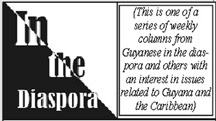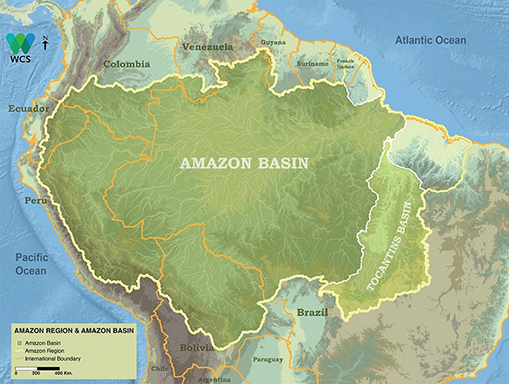
Medino Felician Abraham SJ works in South Rupununi and holds an MSc in Society and Frontier from the Federal University, Roraima Brazil.
Joel Thompson SJ lives in St. Ignatius, Central Rupununi and holds an MSc in Environment and Development from the London School of Economics and Political Science
As 2019 continues to march on, many Guyanese are hoping for and working to attain a better life for themselves and their families. They strive to survive and in the process hope to thrive by having a comfortable and good life as each day passes by. But, what exactly makes a year, a day, a month or even a life ‘good’? Is it great health, more wealth, moral living, values or supportive friends? What exactly constitutes a ‘good life?’ Our individual answers to this question will undoubtedly reflect our values, priorities and worldviews.
If for example, someone argues that having a bigger bank account and spending more is one of their goals, then we can assume that wealth is a primary contributor to well-being for them and is a lifestyle to live by. However, the current dominant global narrative that well-being is primarily based on individual wealth, economic growth and having ‘stuff’ is causing overconsumption. Annually, we are using the equivalent of 1.7 Earths to provide resources and absorb the waste generated by the ‘throwaway culture’. The policy thrust of most governments globally is to reconcile linear economic growth with ‘sustainable’ development but one provocative discourse (Buen Vivir) coming out from Amazonian indigenous communities questions whether ‘development-as-economic-growth’ is something that Amazonian indigenous communities and the world really needs.
Buen Vivir (living well), is an Amazonian indigenous cosmovision which emphasizes the principles of reciprocity, complementarity, respect and relationality in human to human and human to non-human relations. The interdependence between society and the natural environment is crucial and it questions assumptions about the duality between the environment and society in suggesting a holistic systemic perspective, according to scholars like Eduardo Gudynas and Roger Merino.
The term Buen Vivir is best understood as an umbrella phrase for various explanations of the ‘good life’ and therefore there is no absolute position on it. Its meaning is very different from that of well-being and refers to alternative development narratives articulated by indigenous peoples and also to positions critical of conventional development narratives. One reason why the dialogue about a post-development narrative should be kept with indigenous peoples is that many of their cultures do not possess a parallel concept for terms such as ‘progress’ or ‘development’ because of their subsistence economy. Similarly, like the concept of integral ecology, Buen Vivir offers a pathway to change our narrative and story of development beyond the dominant capitalist and individualist one.
Scholars like Gudynas see it as an alternative to ‘development’ and not a rebranding of it as ‘sustainable’ or ‘ecological’ but a jettisoning of the concept completely. The narrative emphasizes that the ‘good life’ and public policy should not be about ‘development- as-economic-growth’ and wealth accumulation. The idea specific to Buen Vivir is that well-being is only possible by participating in reciprocal communal relations. The sense of the word ‘community’ is an expanded one which encompasses nature. Buen Vivir offers a vision of harmonious communal living, both with nature and with other human beings. The narrative is one of humans in solidarity with nature not humans being greater than it. Even within academic and policy circles, there has been an increasing change in statistical measurements from relying solely on economic indicators such as GDP to more people-centred concepts like well-being. One reason for this is because the commonly used statistics do not accurately capture dimensions which increase or decrease the well-being of citizens. An example of this might be an increase in a country’s GDP due to gold mining which is polluting water sources and lowering the experienced quality of life for some citizens through concomitant effects. If this is not factored into accounting frameworks, then an inaccurate picture of well-being will result.
The understanding of the concept of the ‘good life’ from the indigenous worldview shows that nature (humans included) is integral and not separated. This is in contrast to anthropocentric schools of thought or narratives which emphasize the dominance of humans over nature and our imperative to freely use it in order to foster the good life. A utilitarian perspective has taught us to perceive nature as a distinct entity as if it is separate and outside of us. However, the truth is, we coexist with it and are dependent on it. A holistic worldview sees humans as the carers of nature and not the destroyers of it. When nature becomes collateral damage in our quest for progress and development, in essence, we destroy ourselves. The effects of environmental destruction, are felt most keenly among indigenous communities who are directly dependent on Mother Earth for their spiritual, cultural, physical and social needs.
In Guyana, several social and environmental issues negatively affect our well-being. A serious environmental issue which affects our good life is illegal and unregulated mining. Mining destroys the integrity of the ecosystem by clearing forests and leaving huge craters and pits in the ground. Communities near mining camps are rightly concerned about the use of mercury. Mercury can seep into nearby creeks and rivers and trigger health problems. These activities bring serious damage to the well–being and good life of the ecosystem and local population. Concomitant effects of mining are prostitution, human trafficking, substance abuse and domestic violence. These effects are keenly felt within indigenous communities who deplore external influences on their way of life.
Another serious issue is illegal and commercial logging, which destroys the habitat of the birds and animals in the forest. However, besides these environmental concerns faced within the country, there is an issue of land demarcation for indigenous peoples and other social ills like domestic violence.
Again we ask, what do you think a good life consists of? The daily life for indigenous peoples who live on the border with Brazil such as the Patamonas, Macushis, Wai Wais and Wapichans, is one of constant negotiation and trade-offs. Trade-offs are made between embracing aspects of ‘modern’ living (jobs in cities, foreign food/language and technology) while retaining traditional values and practices. However, what is constant is that the dimensions of a good life for these peoples are spoken of in communal terms. Having good relationships within the family and village, participating in village ‘self-help’ and spending time in nature to hunt, farm, fish, or relax are key parts of ‘good living’.
It would be unusual to ask our question concerning a good life and hear that they wanted to be rich, to accumulate many possessions, or have a large bank account and car. Money and wealth are rarely mentioned in conversations about living well. The purpose of having an income is not to amass an individual fortune but to provide for one’s needs, the needs of children and family members. When we hear ‘self-help’, we might think of external books that tell individuals how they should improve some aspect of their life through will-power, determination and practice. However, for indigenous communities in Guyana, the term means working together to achieve goals without outside (non-indigenous) help. People come together to do self-help for building homes, cleaning farms and buildings or conducting repairs. There is a sense of conviviality as everyone (men, women, and children) participates in some form or another whether through direct labour or providing food and moral support. This contrasts with urban centres where the process for erecting a building is to find a contractor, raise funds and hire external workers. Community building literally builds community and is a good way to build relations with each other since at the end of the day everyone has a sense of ownership, or rather, belonging.
Many Amazonian indigenous peoples share that they do not experience a good life when they leave their lands, friends and families to live and work in towns. Exploitation, discrimination and loneliness are common. They are often left broken and disillusioned by the promises of the good life promoted by the media. The communities they leave behind likewise do not experience good living due to the absence of their mothers, fathers, children and leaders. Top-down approaches towards indigenous development can be paternalistic and tend to create the mentality that what comes from the outside is better than what indigenous peoples have possessed for centuries, resulting in many neglecting their rich cultural traditions and seizing a superficial and alienating ‘good life’ to live by. Furthermore, because external projects are often designed without local input and empowerment, they fail when funding is over and personnel move on.
One effect of the colonizing project is that for some people, indigenous peoples are still seen as primitive and backward people. However, the world has slowly been recognising the value and importance of their worldview. The United Nations General Assembly has proclaimed 2019 as the International Year of Indigenous Languages. The year aims to raise awareness of the consequences of the endangerment of Indigenous languages across the world and aims to establish links between language and ecology, identity, development, peace, and reconciliation. Languages do not only allow us to communicate with each other but they also encapsulate and transmit values, worldviews, history, traditions and culture. The Intergovernmental Panel on Climate Change (IPCC) has also recently recognised indigenous peoples as vital partners in global conservation and climate change efforts. It is no coincidence that their traditional territories cover around 22% of the earth’s land surface but hold 80% of its biodiversity. The granting of land rights for indigenous peoples is a recognized climate change solution since they manage around 24% of the total carbon stored aboveground in the world’s forests.
Reflecting on what constitutes a good life helps us to see where our values lie. The conversations with indigenous communities reveal a life where the quality of relationships is valued more than quantity of things (material possessions). Is this something which we can all learn from?





